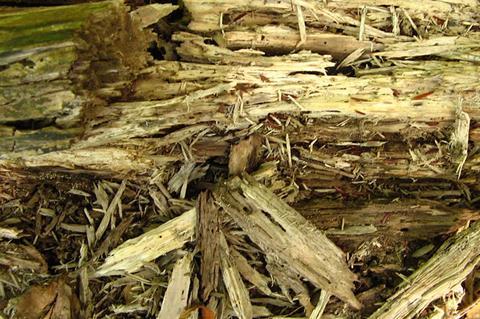A study led by Dr. Guanghui Yu from School of Earth System Science, Tianjin University, delves into the role of magnetite nanoparticles as nanozyme mimics.

Employing the model white rot fungus Phanerochaete chrysosporium, Le Chang and Guanghui Yu investigated the degradation of 4,4′-dichlorobiphenyl (PCB15) with and without the presence of magnetite nanoparticles.
Notably, the addition of these nanoparticles substantially bolstered the breakdown of PCB15 by Phanerochaete chrysosporium, with degradation rates reaching 42% and 84% after 3 and 5 days of co-cultivation, respectively.
Microscopic assessments of fungal-mineral samples were further performed by Le Chang and Guanghui Yu at the National Protein Science Research Facility’s Beamline BL01B within the Shanghai Synchrotron Radiation Facility (SSRF). They observed magnetite particles adhering tightly to fungal hyphae, exhibiting uneven distribution on hyphal surfaces.
Enzyme-like activity
Intrigued by the mechanisms underlying the fungal-magnetite synergy in pollutant degradation, Le Chang and Dr. Guanghui Yu identified that magnetite nanoparticles displayed enzyme-like activity, labeling them ‘nanozymes’.
This discovery suggested an inherent nanozymatic activity within magnetite nanoparticles. Noteworthy was the finding that co-cultivation of the fungus with magnetite nanoparticles significantly augmented the nanozymatic activity of the nanoparticles.
Statistical analysis revealed a strong negative correlation (r=−0.96, p<0.001) between the nanozymatic activity of magnetite and the concentration ratio of PCB15. This supported the notion that white rot fungi enhance the nanozyme activity of magnetite to degrade PCB15.
Delving deeper
To uncover the intricacies of the interaction between the model fungus and magnetite nanoparticles, the researchers employed high-resolution X-ray photoelectron spectroscopy (XPS).
Dr. Guanghui Yu explained, “The white rot fungus degraded PCB15 by enhancing the nanozymatic activity of magnetite, which was primarily governed by oxygen vacancies on the mineral surface (2–10 nm) rather than iron chemistry. These surface oxygen vacancies were predominantly filled by adsorbed oxygen species, including hydroxyl groups (-OH) and adsorbed water.”
In summary, these findings shed light on fungi’s remarkable resilience and adaptation in extreme conditions while providing novel insights into the fungal-facilitated degradation of organic pollutants. This research carries implications for soil remediation in contaminated environments.







No comments yet